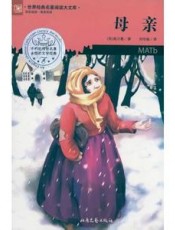are a very welcome addition to the kitchen garden, giving just the often needed touch to the achievement of a successful dish, a touch that will change an everyday vegetable or meat course to something unusual and fancy in cuisine, and with no trouble or added expense to the cook—just a little pinch of this or that, and what a difference it makes! in most households sage is depended on for the flavoring of poultry dressing, sausage and the like, in spite of the fact that it may be anything but pleasing to some member of the family or the welcome guest; so accustomed are we to its use that substitution is scarcely thought of, and yet a very pleasing one is found in summer savory, which most people like better than sage, once its acquaintance is made. coriander and caraway seeds are203 used in bread, cake and cookies, but just a touch of caraway is a very piquant addition to salads. tarragon is used for making tarragon vinegar—the leaves being steeped in pale cider or white wine vinegar until the flavor is extracted and then used in the concoction of salad dressing. dill is used principally for making dill pickles, the leaves being laid alternately with the pickles when laid down. sweet fennel is used for salads and soups and also for fish sauce.
if one has a strip of land at one side of the garden that is not needed, and can be conveniently skipped in the plowing, that will be the place for the herb bed. the soil should be rich and mellow and contain a fair proportion of humus. a poor strip of land may be built up by adding to it from season to season the old manure from the hotbed; this is nearly reduced to humus and the action of the elements will soon complete its transformation.
as many of the herbs are perennial it is best that the bed should be a permanent one, not subject to annual disturbance. it should be long,204 rather than wide, so that the herbs may be gathered without walking on the bed; three feet is a good width as that can be reached across fairly well. as the amount of any one herb used in the average family will be small it is not necessary that they be set in regular rows; they may rather be started in rows, for convenience in planting and identifying when up and then the fine, vigorous plants set in clumps in the border, or in colonies of sorts. the leaves of the various plants are the part used and they should be cut or gathered on a bright, clear day just as the plants are coming into bloom, tied in bunches and hung up in a dry place, an attic with open windows, or a shed, or spread out on racks or a floor, anywhere where they will dry quickly so as to retain all their flavor. when thoroughly dry the leaves should be stripped from the stems and packed in bags or boxes for use.
the annual varieties are cultivated the same as the perennials but if one prefers these may occupy a row through the garden where they can have the cultivation accorded the other vegetables.205 the following list is quite complete and will indicate the various uses for which each is suitable.
perennial herbs
balm. lemon-scented and used for making balm tea.
catnip. beloved of cats and useful in colic of infants.
fennel, sweet. used in salads and soups.
horehound. very useful in coughs and bronchial colds, made into syrup or candy, with sugar.
lavender. for perfuming linen. not hardy and should be protected in winter.
mint. for mint sauces.
pennyroyal. used medicinally, and for seasoning puddings and various dishes.
peppermint. for flavoring and in candy.
rosemary. for flavoring. ("here's rosemary, that's for remembrance.")
rue. for roup in fowls and for medicinal purposes.
206
sage. seasoning for sausage, poultry dressing and the like.
savory, summer. used in place of sage and as flavoring with string beans.
savory, winter. used the same as summer savory.
sweet marjoram. used green in summer and dried in winter.
tansy. for medicinal purposes.
thyme, broad-leaved english. for seasoning and poultry stuffing; also a tea for nervous headache.
annual herbs
anise. for garnishing and flavoring and in making cordials.
basil, sweet. the stems and seeds are used in soups and sauces.
bene. used medicinally—the leaves in water, beneficial in cases of dysentery.
borage. excellent for bees. leaves used in salads, the flowers in cooling drinks.207 caraway. the seed used in bread, cakes, cookies and salads.
chamomile. medicinal. prescribed by physicians as an emetic and vermifuge.
coriander. seeds aromatic. used as a stomachic.
cumin. as food for pigeons.
dill. in making dill pickles.
pimpinella. the young leaves, used as salad, have the flavor of cucumbers.
saffron. used for flavoring and coloring.
tarragon. for flavoring and in salads. does not come from seed but plants must be purchased.
tagetes. this possesses in its green parts almost the true tarragon flavor.
thyme. french summer. used for seasoning.
waldmeister. used in may wine and also for scenting clothes.
